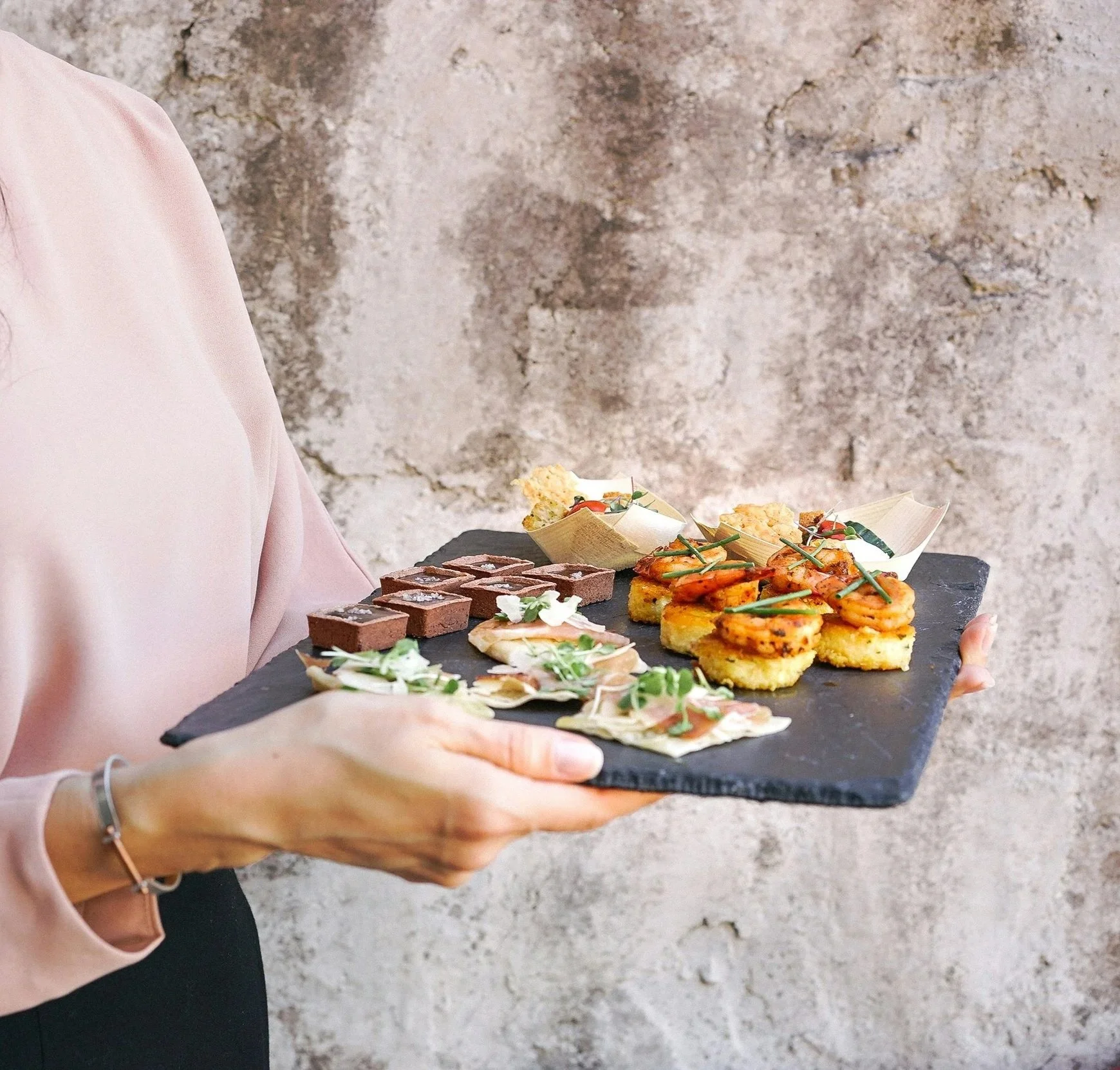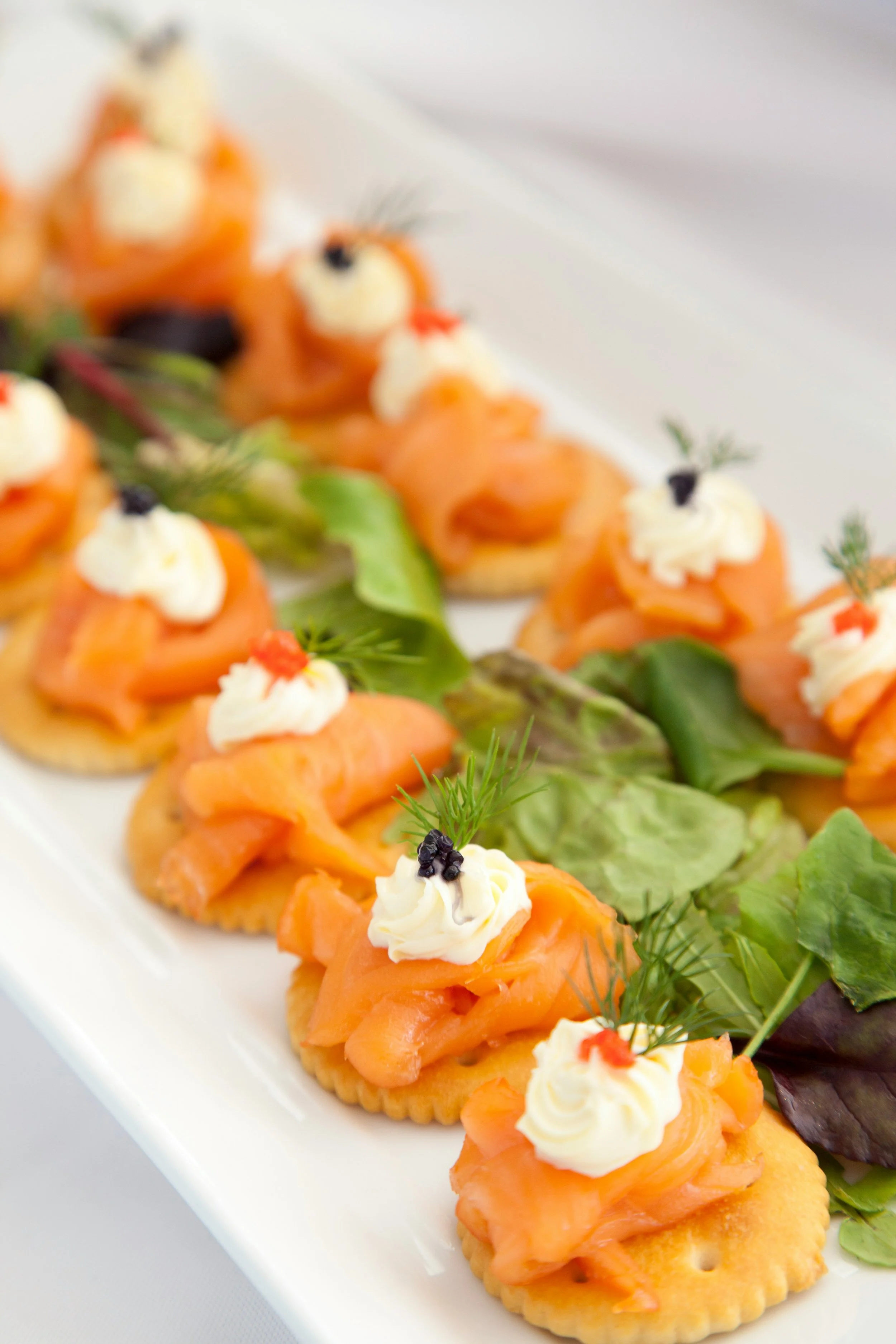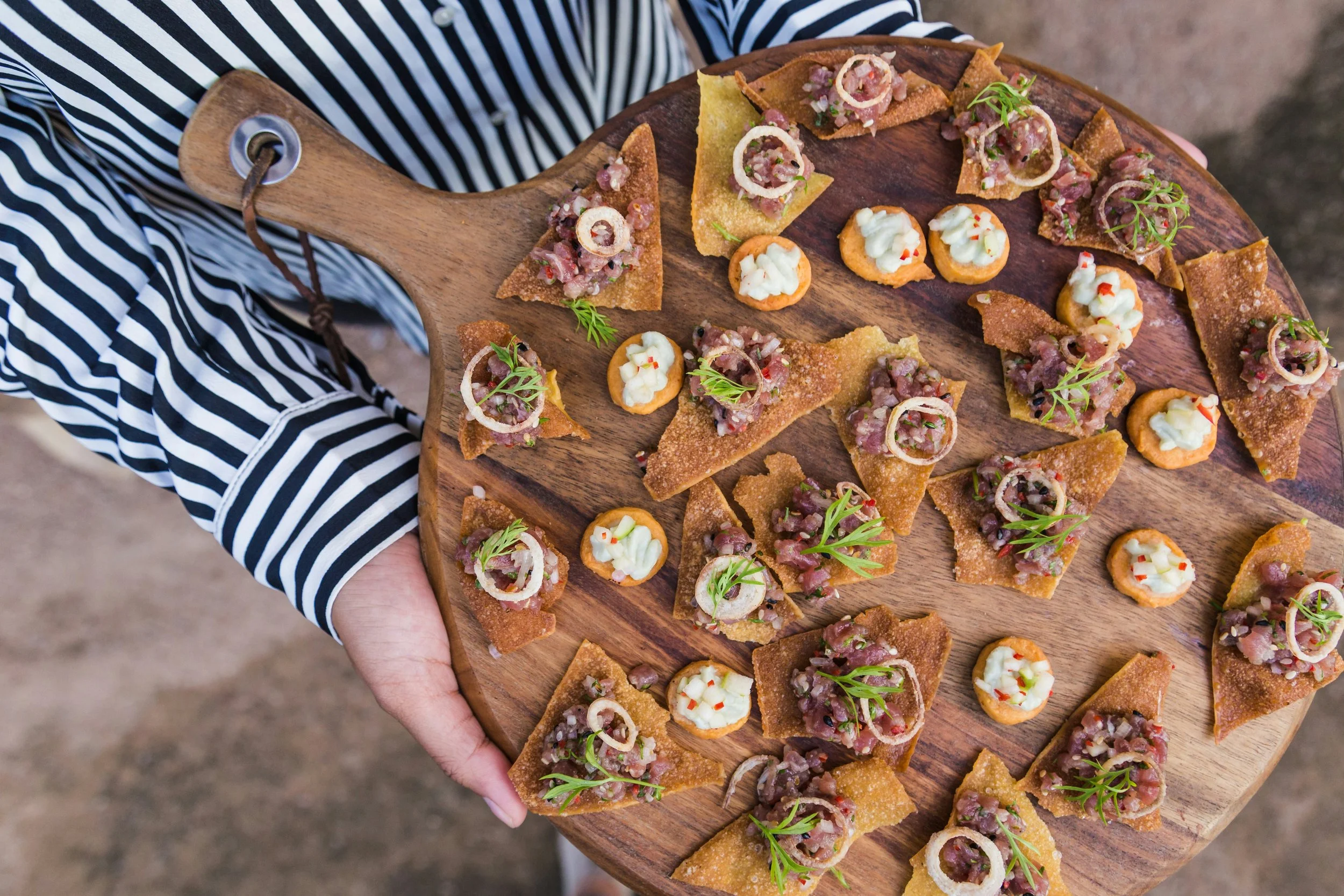Table Serving vs. Passed Service: Choosing the Right Style for Your Event
One of the most overlooked (yet crucial) decisions when planning a canapé or small-bite menu is how you serve them. The method you choose sets the tone for the entire event, affecting guest flow, atmosphere, and even your menu design.
Picture this: the room is alive with chatter, a jazz trio hums in the background, and a waiter in crisp whites glides past, offering trays of jewel-like hors d’oeuvres. Across the hall, another event unfolds—guests seated at elegantly set tables, each place adorned with polished cutlery, where platters of roasted vegetables and seared salmon arrive in a graceful procession.
Both moments are magical, but they’re worlds apart in feel and flow.
The difference? Table Serving vs. Passed Service—two approaches that shape the entire experience of your gathering.
As someone who has planned, cooked for, and served at more events than I can count (from intimate vineyard weddings to corporate galas for 500), I’ve seen firsthand how this single decision can make or break your event’s atmosphere. Let’s break it down.
The Heart of the Choice
Choosing between table service and passed service isn’t about “fancy” vs. “casual.” It’s about how you want your guests to connect, move, and remember the night.
Think of it like setting the tempo of a song. Do you want a waltz—elegant, steady, orchestrated? Or do you want a lively salsa—free-flowing, spontaneous, and full of movement?
Table Serving: The Art of Staying in Place
What It Is
Table serving means guests remain seated while food is brought to them—either plated individually or served family-style from shared platters.
When It Works Best
Formal dinners & galas where the experience is the show.
Multi-course meals with intricate plating or wine pairings.
Events with speeches or performances, where keeping guests seated supports the schedule.
Pros
Comfort & luxury – Guests don’t have to move; service comes to them.
Perfect pacing – Courses can be timed to speeches, toasts, or entertainment.
Showcase artistry – Ideal for dishes with delicate presentation.
Cons
Higher staffing costs – More servers are needed.
Less mingling – Guests stay anchored to their seats.
Slower transitions – Moving from course to course takes time.
Pro Tip from the Trenches
If you’re serving family-style, invest in oversized platters and have servers describe each dish when placing it on the table. It’s a subtle, sensory touch that gets people talking (“Did you try that roasted fennel yet?”).
Passed Service: The Social Butterfly’s Dream
What It Is
Servers circulate through the room with trays of bite-sized items, offering them to guests who are free to stand, mingle, and move about.
When It Works Best
Cocktail receptions and networking events.
Celebrations with dancing or interactive entertainment.
Open house-style gatherings where guests arrive and leave at different times.
Pros
Encourages mingling – Guests naturally move, meet, and chat.
No long waits – Food is available throughout the event.
Versatile menu – You can offer an evolving selection over time.
Cons
Menu limitations – Works best for items that can be eaten in 1–2 bites.
Potential unevenness – Some guests may grab more than others.
Requires circulation strategy – If servers don’t rotate evenly, certain areas miss out.
Pro Tip from the Trenches
Plan for one tray per 15–20 guests every 8–10 minutes to keep the rhythm right. And always send a server out with two crowd-pleasers early to set the mood—think sparkling wine and something handheld but irresistible.
Behind-the-Scenes Realities
The Staffing Equation – Passed service needs confident, charismatic servers who can sell the menu with their personality. Table service requires servers with precision timing and teamwork skills.
The Kitchen Flow – Passed service means rapid, continuous plating in small bursts. Table service means synchronized, large-scale plate-outs—two very different kitchen mindsets.
The Mood Shift – Table service feels curated and paced. Passed service feels fluid and dynamic. The wrong choice for your event’s vibe can feel like wearing heels to a beach party.
Hybrid Magic: The Best of Both Worlds
Some of my favorite events mix the two:
Start with passed hors d’oeuvres and champagne as guests arrive.
Transition into a seated main course served table-side.
End with passed mini desserts and coffee so people can wander again.
This hybrid flow works especially well for weddings, milestone birthdays, and upscale corporate events.
The Takeaway
Table serving invites guests into a story told in courses, like chapters in a novel. Passed service lets them roam freely, collecting flavors and conversations like souvenirs. Neither is “better”—only better for your event’s personality, goals, and budget.
The secret is knowing your audience, your space, and the emotional beat you want the night to have. That’s the difference between a good event and an unforgettable one.
💡 Insider Tip for Hosts: When in doubt, walk your space with your caterer and imagine yourself as a guest—where you’ll stand, where you’ll sit, and how you’ll feel between bites. The flow of the evening often reveals itself in that moment.



